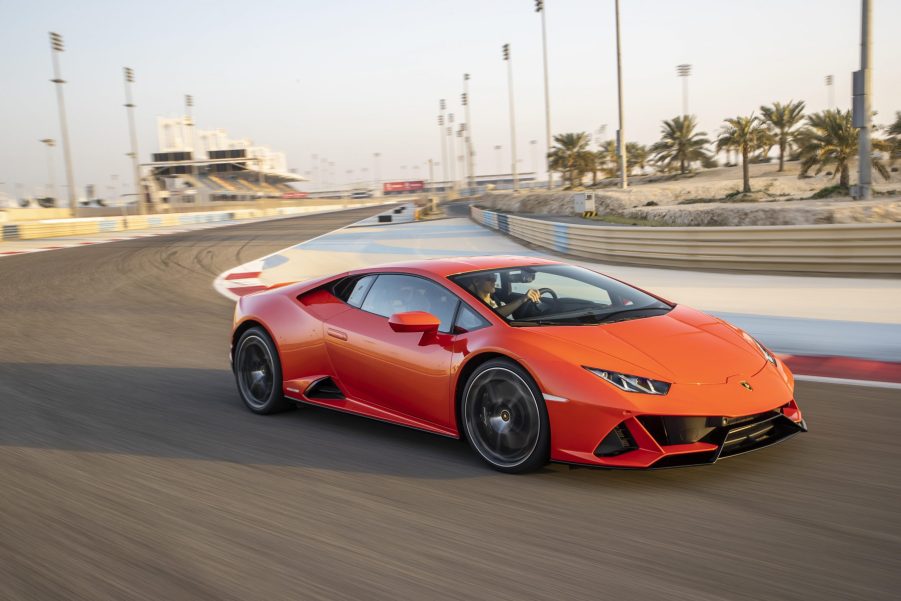
The Lamborghini Huracan May Be the Most Reliable Supercar on the Market
Supercars are not like regular cars. They generally sacrifice practicality and useability in favor of speed, handling, and looks. They are also not measured and reviewed using the same criteria as normal cars. Supercars are generally not crash-tested by the NHTSA or IIHS, and their relatively low production numbers mean they are toys, not daily commuters or family haulers.
One assumption that most of us have about supercars is that they are all tragically unreliable and ruinously expensive to maintain. That is somewhat true, in large part because supercars are not mass-produced, often hand-built, and operate at the upper limits of current automotive engineering technology.
For modern supercars, reliability is often tough to measure. Most owners don’t drive them enough to encounter significant problems, and because they are a niche market, most independent reviewers don’t measure that type of data. It is unlikely you will ever see Consumer Reports with a long-term McLaren 720S test car or the NHTSA crash-testing a Bugatti Chiron. However, UK-based USwitch has compiled a list of the most and least reliable supercars on the market, and surprise, the Lamborghini Huracan scored the best. Let’s take a look at how they got to that conclusion.
Measuring reliability on seldom driven cars

USwitch is a consumer price comparison site that typically covers energy, personal finance, insurance, and communications technology. They recently compiled a list of supercars measuring reliability across 25 different models.
Since most supercar owners don’t drive their cars a lot, sometimes less than a few hundred miles a year, it can be tricky to figure out how reliable a vehicle is. To get a better idea of supercar reliability, USwitch set four criteria by which to measure each car.
The first is the initial MOT pass rate. The MOT is an annual safety, roadworthiness, vehicle emission test required of all vehicles in the United Kingdom. It checks everything from the condition of the seat belts to the fuel system and from the brakes to the state of the battery. If they are not safe or road-worthy, the car fails the test and cannot be legally driven on the road. USwitch looked at how many supercars passed the test on their first attempt. The second criterion is the number of recalls from the manufacturer. The third criterion is the average number of recalls per year of production. The fourth criterion is the average review of the car from a selection of the motoring press. That all combines to give an overall reliability rating on a scale of zero to 10.
How did the Lamborghini Huracan score in USwitch’s ratings?
As I alluded to at the beginning, the Lamborghini Huracan scored the best of the 25 supercars rated. It recorded a 96.2% initial MOT pass rate and has zero recalls during its current production run. That also means that the Huracan has an average of zero recalls per year during its entire production run. Auto reviewers gave it an average score of 4.9 out of 5, which leads to an overall reliability rating of 9.37 out of 10.
What’s more surprising is that the Huracan’s sister car, the Audi R8, scored 7.46 out of 10 in the reliability ratings, making it the 10th most unreliable car ranked. Three other Lamborghinis are on the list, with the Aventador coming in 9th place, the Gallardo in 14th, and the Murcielago in 15th place.
What does all of this mean, and can any conclusions be drawn?

Based on the information collected by USwitch, we can conclude that the Lamborghini Huracan is the most reliable supercar based on the four criteria set. It is important to note that there is no information on the number of mechanical breakdowns per model or problems. There is only information on MOT pass rate and manufacturer recalls. The inclusion of that information might shift the results. The overall number of vehicles in the sample group also affects the results.
Does this mean that you should go out and buy a Lamborghini Huracan for daily use and expect reliability on par with Honda, Toyota, Hyundai? No, definitely not. Keep in mind that the Huracan is still an Italian supercar with a high-strung V10 engine and complicated systems. Lamborghini does not build enough of them to achieve the same production consistency and reliability level as a Toyota Camry.
What we can say is that if you are in the market for a supercar, and you want to spend most of your time driving it and not looking at it from the service center’s waiting room, the Lamborghini Huracan might be the best option. At the end of the day, supercars are all about fun, so buy the one that puts the biggest smile on your face and don’t look back. Expect issues to arise, and make sure your bank account is healthy enough to afford regular maintenance and servicing.
Related: Aventador vs. Huracán: Which Lamborghini Is Faster?


